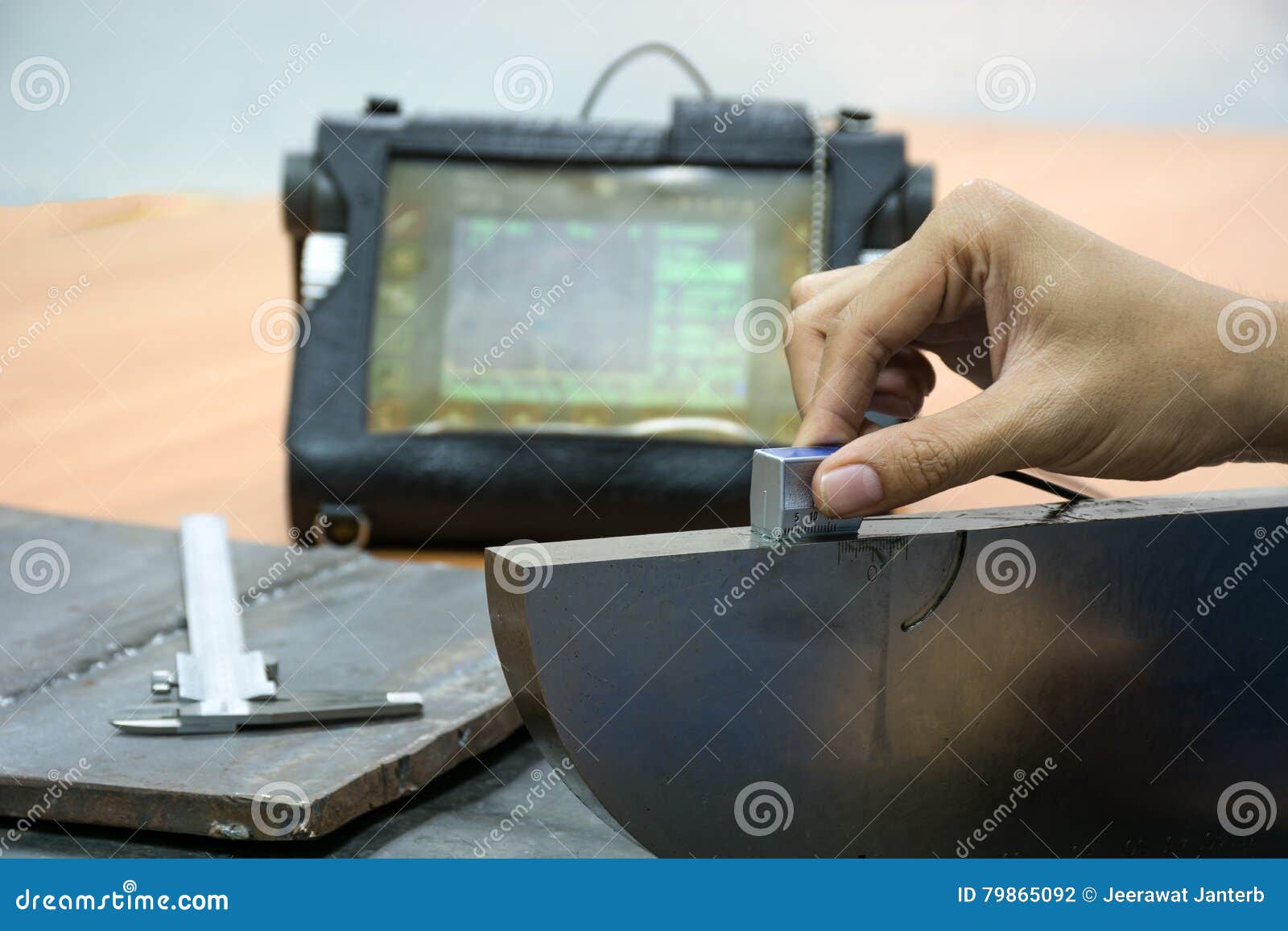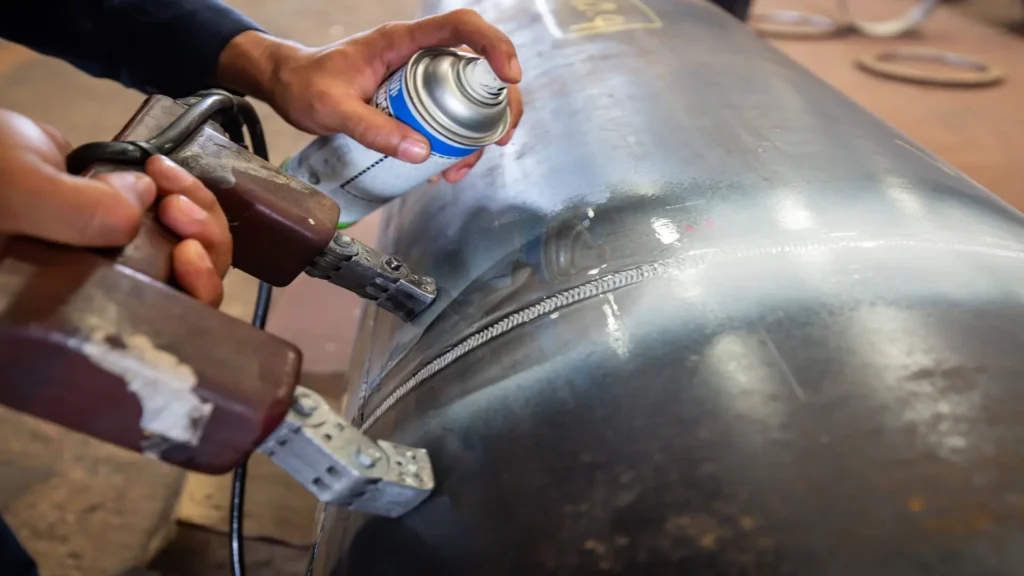How Regular Welding Inspection Madison Can Conserve You Money And Time
How Regular Welding Inspection Madison Can Conserve You Money And Time
Blog Article
Comprehending the Principles of Welding Evaluation to Make Certain High Quality and Safety And Security
In the realm of modern-day design, welding evaluation stands as a keystone for ensuring both the high quality and safety and security of architectural developments. The procedure includes a careful analysis of bonded joints, using advanced methods such as radiographic and ultrasonic testing to find hidden imperfections. The expertise of certified inspectors is important, as they link the void in between academic requirements and sensible application. Their duty expands past simple detection, including the paperwork and communication of findings to relevant stakeholders. What are the nuances of these inspection approaches that make them crucial for keeping architectural integrity?

Relevance of Welding Examination
In the world of industrial fabrication, the relevance of welding examination can not be overemphasized. Welding evaluation plays a crucial role in making certain the stability, safety, and long life of welded frameworks. Provided the varied applications of welding in markets such as building, automobile, aerospace, and shipbuilding, the requirement for strict quality assurance procedures is critical. Appropriate inspection guarantees that welds fulfill specified codes and standards, which is crucial for stopping architectural failures that could cause catastrophic repercussions.
The process of welding inherently includes intricate variables, consisting of temperature level, product properties, and environmental conditions, every one of which can affect the top quality of the weld. An extensive examination recognizes defects such as fractures, porosity, and insufficient blend, which can endanger the strength and reliability of the weld. By finding these concerns early, corrective actions can be taken, thus minimizing the threat of failing and linked costs.
Additionally, welding evaluation contributes to regulative compliance, as lots of markets are controlled by rigorous safety and security criteria and standards. Failing to stick to these guidelines can lead to monetary charges and legal liabilities. Ultimately, welding inspection not just safeguards physical frameworks yet likewise secures human lives and maintains market credibilities.

Key Welding Examination Approaches
Although welding assessment is vital to guaranteeing the quality and security of welded structures, it is the specific approaches utilized that determine the performance of the assessment process. Trick welding assessment methods can be generally categorized right into non-destructive testing (NDT) and harmful testing. Non-destructive screening methods such as visual inspection, ultrasonic testing, radiographic screening, magnetic particle screening, and fluid penetrant testing are largely used to review the homes of a weld without creating damage. Aesthetic examination is typically the primary step, including a thorough assessment of the weld's surface area for defects like fractures or porosity.
Magnetic particle screening and liquid penetrant screening are surface inspection approaches used to situate surface and near-surface flaws. These thorough evaluation approaches make sure that welds meet market standards and security requirements, consequently guaranteeing architectural integrity and efficiency.
Function of Certified Inspectors
Qualified examiners play a crucial function in the welding examination process, making sure that all welds follow rigid sector standards and security regulations. Their experience is important in recognizing defects or irregularities that might endanger the architectural integrity of a weld. By thoroughly checking out each weld, certified examiners assist protect against potential failures that could cause harmful mishaps or expensive fixings.
To come to be qualified, inspectors should go through extensive training and testing, which familiarizes them with different welding methods, products, and screening approaches. This thorough expertise permits them to review weld top quality properly and make educated judgments concerning their safety and security and integrity. Qualified examiners are skilled in translating specifications and plans, making sure that the welding work straightens with the job's style requirements.
An important component of their role is to document their searchings for thoroughly, offering a thorough record of the evaluation procedure. Their payment is essential in preserving high degrees of top quality and safety and security in welding procedures.

Tools Used in Welding Examination
Welding examiners rely upon a variety of specialized devices to do their responsibilities effectively, making certain each weld satisfies the necessary criteria. Among these devices, visual inspection help like magnifying glasses and mirrors are basic, allowing assessors to carefully check out welds for surface issues such as fractures, porosity, and undercut. Calipers and fillet weld gauges are necessary for measuring weld measurements to verify compliance with layout specs.
Advanced devices extend past aesthetic aids, consisting of non-destructive screening (NDT) equipment. Ultrasonic screening devices are critical in detecting subsurface problems, making use of acoustic waves to expose inner gaps without endangering the weld's integrity. Radiographic testing uses X-rays or gamma rays to record images of a weld's interior, highlighting prospective issues.
Magnetic particle testing is another important device, specifically for spotting surface and near-surface interruptions in ferromagnetic products. By using ferrous particles and magnetic fields, inspectors can identify defects that could or else be unseen.
Dye penetrant examination is often used for non-ferrous materials, providing a contrast-enhanced visual check for surface-breaking defects. Welding Inspection Madison. With each other, these devices make it possible for welding assessors to adequately analyze weld top quality, making certain safety and security and integrity in numerous applications throughout markets
Guaranteeing Structural Integrity

Welding treatments must follow established standards and codes, such as those specified by the American Welding Society (AWS) or the International Organization for Standardization (ISO) These standards make certain that the welds can withstand ecological aspects and functional anxieties. Qualified and accredited welders play a critical role in this process, as their expertise guarantees that techniques are applied correctly, minimizing issues such as splits, porosity, and insufficient fusion.
Post-weld evaluation is another essential part of confirming structural honesty. Non-destructive testing (NDT) methods, consisting of ultrasonic testing and radiographic testing, are utilized to discover subsurface defects without endangering the bonded structure. These examinations verify that the welds meet the additional reading needed quality criteria, supplying assurance of their toughness and dependability. Inevitably, making sure structural stability in welding not only safeguards human lives however also secures financial investments and improves the long life of engineered frameworks.
Conclusion
The basics of welding evaluation are essential for keeping the quality and safety and security of welded frameworks. The use of specialized devices additionally enhances the assessment process, inevitably safeguarding human lives and lengthening the lifespan of bonded constructions.
Welding assessment plays a crucial duty in guaranteeing the honesty, safety, and durability of bonded structures.Although welding assessment is crucial to making sure the quality and security of bonded frameworks, it is the particular techniques used that determine the efficiency of the examination process. Key welding assessment approaches can be broadly categorized into non-destructive screening (NDT) and devastating browse around this web-site testing.Certified examiners play an essential duty in the welding inspection process, guaranteeing that all welds conform with rigid sector criteria and safety and security regulations.The fundamentals of welding evaluation are vital for preserving the top quality and safety and security of bonded frameworks.
Report this page